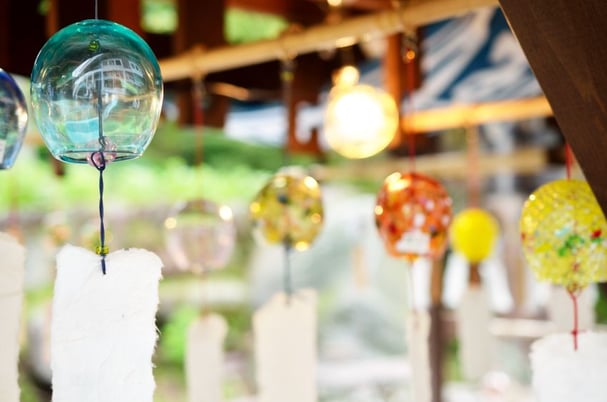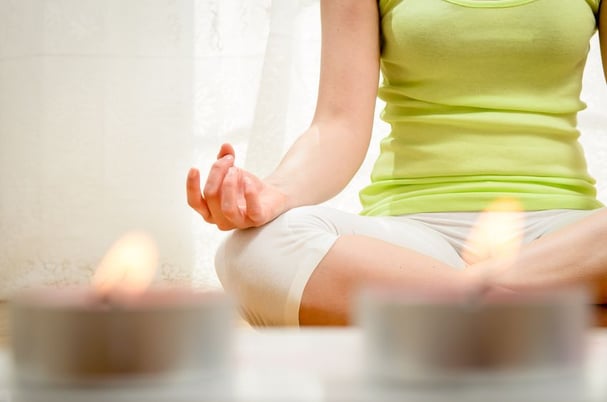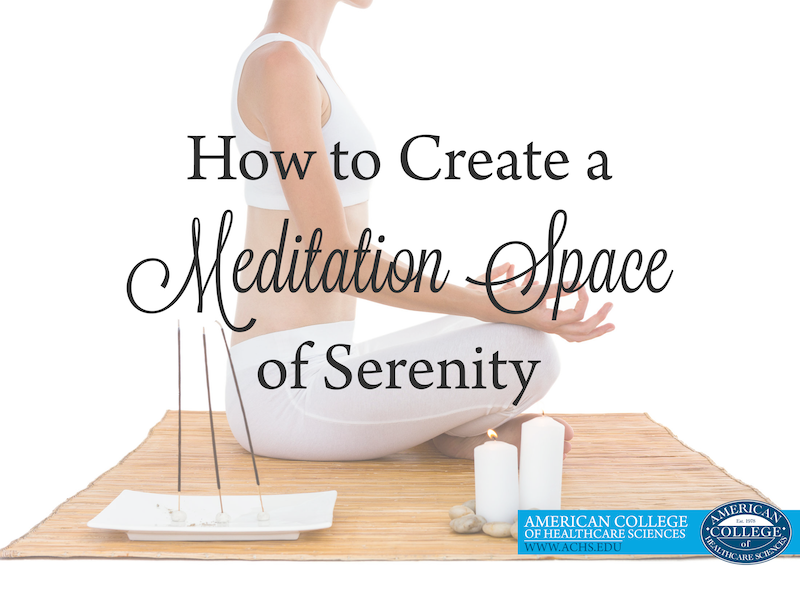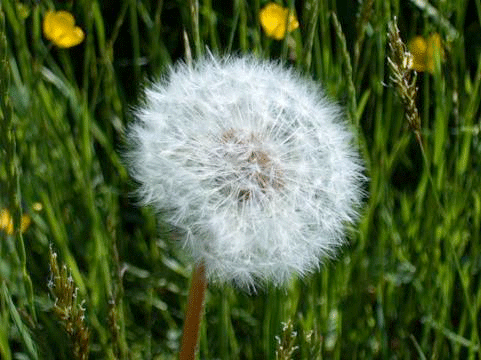You know, it’s funny. I always considered myself a terrible meditator, which as a yoga teacher and Reiki practitioner, I was loathed to admit. After months of disappointment, I even enrolled myself in a strict and silent 10-day Vipassana retreat.
Needless to say, drastic measures were not the path to peace.
Eventually, I admitted my frustration to my own teacher. She smiled, paused, and asked me to tell her the “right” way to meditate.
So I did: sit in silent stillness for long periods of time without wanting to leap up every two minutes. Again she smiled, paused, looked at me for a long time, and said, “No one makes up the rules; meditation fits itself to the individual, not the individual to the meditation.”
Finally, there it was: I was trying to Meditate, rather than simply meditate. I was getting in my own way.So, I scrapped all the dogmatic ideas I’d stored up and began again. I decided to create a meditation space—a space dedicated to self-restoration, a space in which I wanted to sit, to retreat, rather than one to which I sentenced myself. A restorative, serene space to meditate.
Create a Meditation Space that Calls to You
Perhaps it’s counterintuitive to craft a retreat space using material goods, but scrap that criticism. It’s akin to getting into yoga because you wanted to look or be like x or y, or into herbs because you read an article about a celebrity’s love affair with dandelion root.
Long story short? What gets you into the practice of meditation doesn’t matter. Those surface things fall away: you discover you really love the practice of meditation, of yoga, of using herbs as both food and medicine. No guilt, no chastising allowed.
Do Research to Craft Your Meditation Space
Scroll through Pinterest pages, Tumblr pages, Google image searches. Catalog your reactions and take notes.
I found I wanted to include…
- Natural light
- Natural materials
- Plants (especially herbs like lavender Lavandula angustifolia (Mill.) and sage Salvia officinalis (L.)—fragrant and historically sacred over many traditions)
- Tibetan singing bowls
- Lots of unstructured space
Suddenly, I had the ingredients for a room in which I’d look forward to sitting—for hours, perhaps.
A Meditation Cushion is Crucial
One thing I did take away from my Vipassana retreat, an absolute must to any meditation space, is something to sit on.
I prefer using a buckwheat-filled zafu cushion (which you can get anywhere from your sewing machine to Etsy to your favorite yoga gear supplier), but you can also use a rolled up blanket or towel, a sturdy pillow, or a specially built wooden meditation seat, of which there are countless designs.
The seat is essential because even if blessed with the perfect Lotus pose and spinal posture, long periods of sitting wear on your lumbar spine. A cushion adds the perfect tilt to the pelvis, making sitting more natural. It’s much easier to meditate when you’re not cataloguing pain in your back/knees/ankles.
 Surround Yourself with Beauty
Surround Yourself with Beauty
If you’re lucky enough to have an outdoor space that resonates with you, place something that dedicates that space to you, from candles to crystals, wind chimes to sun-catchers; let the meditation space resonate your energy, even when you’re not present.
Indoors? Find a corner (or a room if you have it) dedicated only to this purpose. But keep in mind: having to set it up every time you want to sit will dissuade you from your nascent ritual.
Add colors that stir you, aromas, crystals, or anything that catches and plays with light. You can also craft an aromatherapy blend to suit your dedicated meditation time. Plants and herbs are also wonderful—clearing, cleansing, and restorative.
What About Music?
Personally, I find music incredibly helpful. My mind is often too busy for silence (at least at this point in my evolution).
I prefer sacred chants that repeat (these are called japa mantra and you can find beautiful selections by artists such as Snatam Kaur, Deva Premal, and Jai-Jagdeesh, to name a few), or try soft instrumental music.
Music is nothing more than a lovely tool allowing you to go deeper. Eventually, perhaps, you will crave sitting in silence. Let these things evolve in their own time.
 Create a Meditation Space that Nourishes You
Create a Meditation Space that Nourishes You
The crux is this: find something that draws and inspires you—a space, an object, a sound, a color—and indulge in it. Set up your meditation space in a way that comforts and nurtures and restores. Then, begin your gentle practice.
- Turn off everything that rings, knocks, tweets, or chimes.
- Set a timer, if you wish.
- Begin slowly—five minutes at a time, adding another five whenever you feel ready to sit longer.
Be gentle with yourself. This is healing work.
This is the opportunity to meet yourself and find that the self is one of the most inspiring individuals you’ve ever been blessed enough to meet.
This article is for informational purposes only. It is not intended to treat, diagnose, cure, or prevent disease. This article has not been reviewed by the FDA. Always consult with your primary care physician or naturopathic doctor before making any significant changes to your health and wellness routine.
Disclosure of Material Connection: I am a graduate of American College of Healthcare Sciences, the Institution that publishes this blog. However, all opinions are my own. This blog may contain affiliate links. I am disclosing this in accordance with the Federal Trade Commission’s 16 CFR, Part 255: “Guides Concerning the Use of Endorsements and Testimonials in Advertising.”






